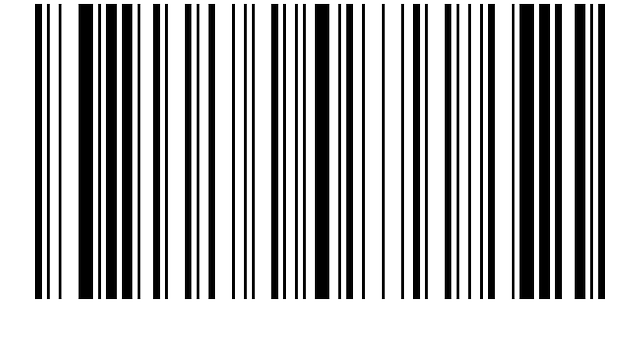What is the European Article Numbering (EAN) Code?
European Article Numbering code (EAN) is a series of numbers in a specific order that helps identify individual products within a company’s inventory.
EAN codes are twelve (12) to thirteen (13) digit codes accompanied by a barcode. Similar to a person’s fingerprint, no two codes are the same. In most cases, the number and barcode will be presented on the packaging of the product for sale.
These codes or EAN Barcodes, are usually scanned and read by a computer, similar to what happens at most local stores’ check-out counters. At times, for one reason or another, barcodes are unable to be scanned. When this occurs, the number can be entered into the computer system manually.
In general, EAN codes make it easier for suppliers, manufactures, vendors, and consumers to:
- Search and find individual products
- Mitigate risk, since the level of human error will be minimized when processing products
- Establish a standardized system that eradicates the handwritten system, which often contains inconsistent information and labeling.
UPC and EAN – What’s the Difference?
Universal Product Codes are most commonly used in the United States of America, while European Article Numbers, EANs, are used internationally. It should be noted that most places will accept both UPC and EAN codes.
However, if the enterprise intends on selling products outside of the United States, an EAN code might be best suited. EAN barcodes contain thirteen (13) digits, leading with a zero (0) in front of the standard GTIN- twelve (12) digit UPC codes. Both UPC and EAN barcodes are otherwise identical.
Why do we use European Article Numbering (EAN) code?
It’s worth mentioning that not everyone who sells online will need to have an EAN code. However, this refers to vendors who sell their products online within Europe. On the other hand, if you are selling digital products online and even to consumers in Europe, you do not need an EAN code.
But if the company is desirous of selling it’s physical products within Europe, then the company will need to ensure that each item has an EAN number.
It’s important for manufacturers to also have EAN codes as this will allow vendors to easily identify products and compare them online. For companies or retailers who provide drop shipping, the manufacturers must be informed of the need to include EAN numbers for those products.
With the implementation of EAN codes, you can increase the probability of demand of your products. Since, without the code, it becomes increasingly difficult for the end consumer to find the item that they are searching for to satisfy a specific need or want.
In other words, if you are able to improve the way a consumer sources and locates your products, you will appear more or attractive when compared with any other competing business.
The “big players” in the business, such as Google and Amazon, have made it difficult to use invalid codes by making it mandatory to have UPC and EAN codes on all products sold on their platforms.
Therefore, for the seller to gain significant visibility on the platforms or marketplaces used by these “big players” and expect to sell within Europe, all your products must have a valid EAN code.
Does every product need an EAN code?
There are cases where you do not need an EAN code to sell your products.
First:
If you do not intend to sell your product in Europe, then there will be no need for it. But note that there will be other codes that will be needed to sell in other areas of the world.
Second:
If your niche is in the area of the crafts or art industry, you also do not need an EAN barcode.
In these cases, you can still sell in various marketplaces, like Amazon, provided you apply for a brand registry. You will need to present your trademark certificates and wait to be approved.
Once approval is granted, you can continue to sell. Further to that, you can apply for an EAN exemption. This is also provided by Amazon and takes approximately one (1) month to be completed. However, this exemption is only valid for a month.
How many EAN codes you should get will largely depend on how many products you intend to sell. A decision must also be taken as to how many unique codes will be needed to uniquely identify each product and its varying features.
EAN-13 Barcode – How to read?
There are a number of different variations of the standard barcode formats that we all might be familiar with. These may include: Code 29 and Code 128, the ISSN and ISBN, the UPC barcode, and the EAN barcode.
All these variations basically work in an identical manner but are designed differently and the scanner recognizes them differently.
As was stated earlier, EAN-13 stands for European Article Number and the thirteen (13), in this case, indicates that there are thirteen (13) digits in the design.
The EAN-13 is based on the Universal Product Code standard (UPC), but it is the international form of the code in the United States.
The code was invented by the International Article Numbering Association in Europe and has two (2) more numbers in its format than the UPC code, which as it follows, only has eleven (11) numbers.
However, a last digit or check digit is included to make it twelve (12) digits. A check digit calculation is done to verify that the UPC code is authentic. This code was developed to create a standard that would be better suited and accepted internationally by many retailers.
EAN-13 is a version of the original barcode, UPC-A. What this means is that the computer systems with barcode scanners that are able to read an EAN-13 symbol will also have the ability to read any UPC-A barcode symbol.
The only major difference between EAN-13 and UPC-A is that the system used for the numbering of the UPC-A is an individual digit from 0 to 9, on the other hand, an EAN-13 numbering system comprises of two (2) digits that can be anywhere from 00 through to 99, which is fundamentally the country code.
The country code is specific to the country. Country codes are important as they help identify countries and can help to easily identify a global trade item with a difference for a targeted market.
Global Standard 1 (GS1) is a non-profit organization that is the international body and authority for the sale of barcodes. GS1 is the authority that allocates codes to companies that fall within a certain jurisdiction.
The barcode above, when scanned at retail stores will pull up the same text on the sale system or screen that is printed on the barcode itself: “
to insert number
”. In other words, what you see on the product is what you see on the display screen of the sale system. This barcode number can be manually entered into the sale system.
However, once a scan is initiated, barcode scanners release a red light beam that has a built-in sensor, the sensor picks up the light that is reflected from the barcode and produces an analog indication with the variable electrical energy that characterizes the power of what is being reflected. What is picked up by the scanner is then transformed into a digital signal and sent back to the decoder.
Components of the EAN-13 code
EAN codes can be separated into four parts:-
- The number/digit scheme
- Code for the manufacturer
- The product/item code
- The check digit
Normally, the first number scheme digit is written just left of the barcode; the second digit in the number scheme is written as the first number of a group of six on the left-hand side of the barcode.
The code indicating the manufacturer is the following five numbers on the left-hand side of the barcode.
The product/item code is indicated by the first five numbers on the right-hand side of the barcode.
And the check digit is the final number on the right-hand side (See barcode illustration below).







